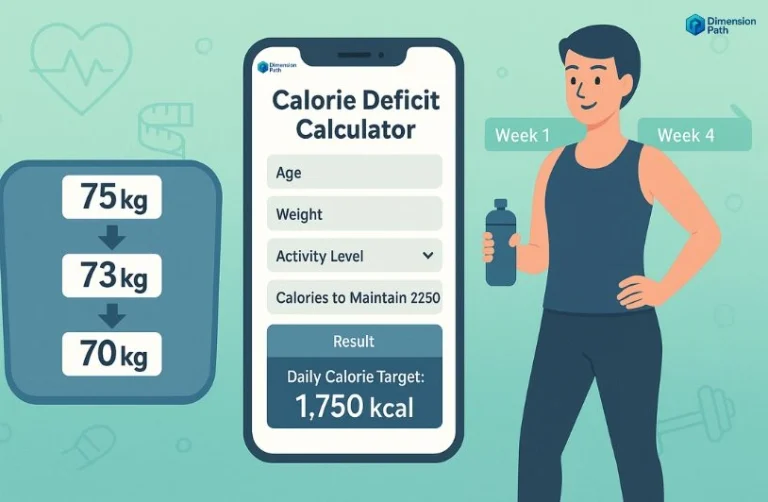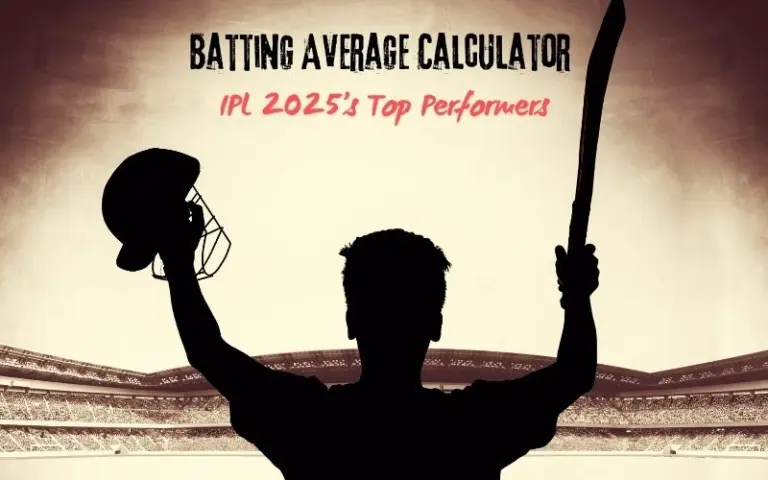What’s the Exact Distance of a Marathon? Everything You Need to Know
Picture this: You’re standing at the starting line with thousands of other runners, your heart racing with excitement and nerves. The announcer’s voice booms across the crowd, “Today, you’ll conquer 26.2 miles!” But have you ever wondered why marathons are exactly this distance? Understanding how long is a marathon is crucial for any runner planning to take on this incredible challenge.
The marathon stands as one of the most prestigious and challenging running events in the world. Whether you’re a beginner dreaming of your first race or an experienced runner looking to improve your time, knowing the exact marathon distance is essential for proper training and mental preparation. This comprehensive guide will answer all your questions about how long is a marathon, provide detailed distance breakdowns, and help you understand what it truly takes to complete this iconic race.
Disclaimer: This article is for informational purposes only and should not replace professional medical advice. Always consult with a healthcare provider before beginning any marathon training program, especially if you have pre-existing health conditions. Training for and running a marathon carries inherent risks, and individual results may vary.
Last Updated: July 2025
Understanding the Standard Marathon Distance
How long is a marathon? The official marathon distance is 26.2 miles or 42.195 kilometers. This precise measurement has been standardized since 1921 by the International Association of Athletics Federations (IAAF), now known as World Athletics.
When people ask how long is a marathon in miles, the answer is consistently 26.2 miles across all official marathon events worldwide. This marathon miles measurement applies whether you’re running the Boston Marathon, New York City Marathon, or any other certified marathon race.
Why 26.2 Miles?
The story behind how far is a marathon dates back to the 1908 London Olympics. Originally, marathons were approximately 25 miles, based on the ancient Greek story of Pheidippides. However, the 1908 Olympic marathon course was extended to 26.2 miles to start at Windsor Castle and finish in front of the royal box at the London Olympic Stadium.

Marathon Distance in Different Units
Understanding marathon distance in various measurements helps runners from different countries and backgrounds better prepare for their race.
| Unit | Distance |
|---|---|
| Miles | 26.2 miles |
| Kilometers | 42.195 km |
| Meters | 42,195 meters |
| Yards | 46,145 yards |
| Feet | 138,435 feet |
Marathon in Km Explained
For runners who prefer metric measurements, the marathon in km is exactly 42.195 kilometers. This precise marathon distance ensures consistency across international competitions and helps runners worldwide train with the same target distance.
How Long is a Marathon in Miles vs Other Distances
When comparing how long is a marathon in miles to other common running distances, the difference becomes clear:
- 5K: 3.1 miles
- 10K: 6.2 miles
- Half Marathon: 13.1 miles
- Marathon: 26.2 miles
- Ultra Marathon: 31+ miles
Training for the Marathon Distance
Understanding how long is a marathon is just the beginning. Training for this marathon distance requires months of preparation and gradual mileage buildup.
Building Your Mileage
Most training programs span 16-20 weeks, gradually increasing weekly mileage to prepare your body for marathon miles. Here’s a typical progression:

Beginner Training Phases:
- Base Building (Weeks 1-8): Build aerobic fitness with easy runs
- Build-Up (Weeks 9-12): Increase mileage and add tempo runs
- Peak (Weeks 13-16): Highest mileage weeks with long runs
- Taper (Weeks 17-20): Reduce volume before race day
Long Run Progression
Your long runs are crucial for marathon preparation. Here’s how they typically progress:
| Week | Long Run Distance | % of Marathon Distance |
|---|---|---|
| 1-4 | 6-10 miles | 23-38% |
| 5-8 | 10-14 miles | 38-54% |
| 9-12 | 14-18 miles | 54-69% |
| 13-16 | 18-22 miles | 69-85% |
| 17-20 | 8-12 miles (taper) | 31-46% |
Marathon Pacing and Time Goals
Knowing how far is a marathon helps you set realistic time goals. Marathon miles can be covered at various paces depending on your fitness level and experience.
Common Marathon Finish Times
- Elite Runners: 2:05-2:30 (men), 2:20-2:45 (women)
- Competitive Runners: 2:30-3:30
- Recreational Runners: 3:30-5:00
- First-Time Marathoners: 4:00-6:00+
Pacing Strategy
Understanding the marathon distance helps you break down your pacing:
- Even Pacing: Same pace throughout all marathon miles
- Negative Split: Faster second half
- Progressive: Gradually increasing pace

Comparing Marathon Distance to Other Races
Half Marathon Distance
The half marathon distance is exactly 13.1 miles or 21.0975 kilometers. This represents exactly half of how long is a marathon, making it a popular stepping stone for runners preparing for the full marathon distance.
Marathon Distance in Miles vs Ultra Marathons
While marathon distance in miles is 26.2, ultra marathon distance begins at 31 miles (50K) and can extend to 100 miles or more. Some popular ultra distances include:
- 50K (31 miles)
- 50 miles
- 100K (62 miles)
- 100 miles
Half Marathon Distance in Miles Training Benefits
Training for the half marathon distance in miles (13.1 miles) provides excellent preparation for understanding how long is a marathon. Many runners use half marathons to:
- Test pacing strategies
- Practice race day nutrition
- Build confidence for the full marathon miles
Nutrition and Hydration for Marathon Distance
Completing marathon miles requires proper fueling strategy. Your body can only store enough glycogen for about 18-20 miles, making nutrition crucial for the final 6-8 miles.

Fueling Strategy
- Pre-race: Carb loading 3 days before
- During race: 30-60g carbohydrates per hour after mile 8
- Hydration: 16-24 oz fluid per hour depending on conditions
Common Fueling Options
- Energy gels
- Sports drinks
- Bananas
- Energy chews
- Real food (dates, pretzels)
Mental Preparation for Marathon Distance
The mental aspect of covering marathon distance cannot be understated. Many runners experience “the wall” around mile 20-22, making mental preparation crucial.

Breaking Down the Distance
Instead of thinking about how far is a marathon as one massive distance, break it into manageable segments:
- Miles 1-8: Easy, conversational pace
- Miles 9-18: Settle into marathon pace
- Miles 19-23: Mental toughness zone
- Miles 24-26.2: Give everything you have left
Marathon World Records and Elite Performance
Understanding how long is a marathon at the elite level provides inspiration and context for recreational runners.
Current World Records (as of January 2025)
- Men’s World Record: Kelvin Kiptum (Kenya) – 2:00:35
- Women’s World Record: Tigst Assefa (Ethiopia) – 2:11:53
These incredible athletes cover marathon miles at paces most recreational runners can’t sustain for a single mile.
Elite Pacing Breakdown
Elite marathoners typically run:
- Men: 4:35-4:45 per mile pace
- Women: 5:00-5:15 per mile pace
Common Marathon Training Mistakes
Understanding marathon distance helps avoid these common training errors:
- Too Much, Too Soon: Increasing mileage too quickly
- Ignoring Recovery: Not allowing adequate rest between hard sessions
- Wrong Race Pace: Running long runs too fast
- Inadequate Fueling Practice: Not practicing race day nutrition
- Overtraining: Doing too many hard workouts
Race Day Strategy for Marathon Distance
Successfully completing marathon miles requires a solid race day plan.
Pre-Race Preparation (3-4 hours before)
- Light breakfast with familiar foods
- Hydrate adequately
- Arrive at start line with time to spare
- Use restroom facilities
During the Race
- Miles 1-5: Start conservatively, settle into rhythm
- Miles 6-13: Find your target pace
- Miles 14-20: Maintain effort, begin fueling regularly
- Miles 21-26.2: Mental toughness, push through fatigue
Post-Race Recovery
After completing how far is a marathon, proper recovery is essential:
- Cool down with easy walking
- Refuel within 30 minutes
- Gentle stretching
- Ice bath or cold therapy
- Plan 1-2 weeks of reduced training
Special Marathon Considerations
Weather Impact on Marathon Distance
Weather significantly affects how challenging marathon miles feel:
Hot Weather:
- Slower paces necessary
- Increased hydration needs
- Higher perceived effort
Cold Weather:
- Proper layering essential
- Maintain core temperature
- Adjust warm-up routine
Wind:
- Headwinds increase effort
- Tailwinds can help but may cause overheating
- Crosswinds affect balance
Altitude Considerations
Running marathon distance at altitude (above 5,000 feet) requires special preparation:
- Arrive 2-3 weeks early for acclimatization
- Expect slower times
- Increase hydration needs
- Monitor for altitude sickness symptoms
Marathon Distance Around the World
Different countries and cultures approach how long is a marathon with unique perspectives and traditions.
Major World Marathon Majors
The six World Marathon Majors all maintain the standard marathon distance:
- Boston Marathon (USA): Qualifying times required
- New York City Marathon (USA): Lottery system
- Chicago Marathon (USA): Lottery system
- London Marathon (UK): Ballot system
- Berlin Marathon (Germany): Fast, flat course
- Tokyo Marathon (Japan): Incredible organization
Cultural Significance
Each marathon carries cultural significance while maintaining the same marathon miles:
- Boston: Historic, prestigious qualifying standards
- Comrades (South Africa): Ultra-marathon (56 miles)
- Athens Classic: Runs the original marathon route
Technology and Marathon Distance
Modern technology helps runners tackle marathon distance more effectively.
GPS Watches and Tracking
- Real-time pace feedback
- Distance tracking
- Heart rate monitoring
- Navigation assistance
Apps and Training Platforms
- Strava: Social training platform
- Garmin Connect: Detailed analytics
- TrainingPeaks: Advanced training metrics
- Nike Run Club: Guided runs and community
Race Day Technology
- Timing chips for accurate results
- Live tracking for spectators
- Digital pace bands
- Emergency communication devices
Frequently Asked Questions
Is it true only 1% of people run a marathon?
While the exact percentage varies by country, approximately 0.5-1% of the population has completed a marathon. In the United States, roughly 0.5% of adults have finished a marathon, making it a relatively exclusive achievement that requires significant dedication and training.
What is the current marathon world record?
As of January 2025, the men’s marathon world record is 2:00:35, set by Kelvin Kiptum of Kenya at the Chicago Marathon in 2023. The women’s world record is 2:11:53, set by Tigst Assefa of Ethiopia at the Berlin Marathon in 2023. These records represent the pinnacle of human endurance and speed over the marathon distance.
Conclusion
Understanding how long is a marathon goes far beyond simply knowing it’s 26.2 miles. The marathon distance represents a journey of physical preparation, mental fortitude, and personal achievement that challenges runners at every level. Whether you’re planning your first marathon or seeking to improve your personal best, respecting the marathon miles and preparing properly is essential for success.
From the historical origins of why how far is a marathon became standardized at 26.2 miles to the modern training methods used by elite athletes, the marathon continues to captivate runners worldwide. The marathon distance serves as the ultimate test of endurance running, requiring months of dedicated training and careful race day execution.
Remember that completing marathon miles is an incredible accomplishment that only a small percentage of people achieve. With proper preparation, realistic goal setting, and respect for the marathon distance, you can join the ranks of marathon finishers and experience the unique satisfaction of crossing that finish line after 26.2 miles.
Whether you measure it in marathon in km (42.195) or how long is a marathon in miles (26.2), this distance will challenge you in ways you never imagined while rewarding you with memories and confidence that last a lifetime. Start your training journey today, and take the first step toward conquering the marathon distance with Dimensions Path as your trusted resource for achieving your running goals.
Also, check out our last post on How Long to Boil Eggs at Dimensions Path!
Looking to make someone smile? Find thoughtful wishes at “TerrificWishes.com“

Running Pace Calculator
Calculate your running pace based on time and distance







